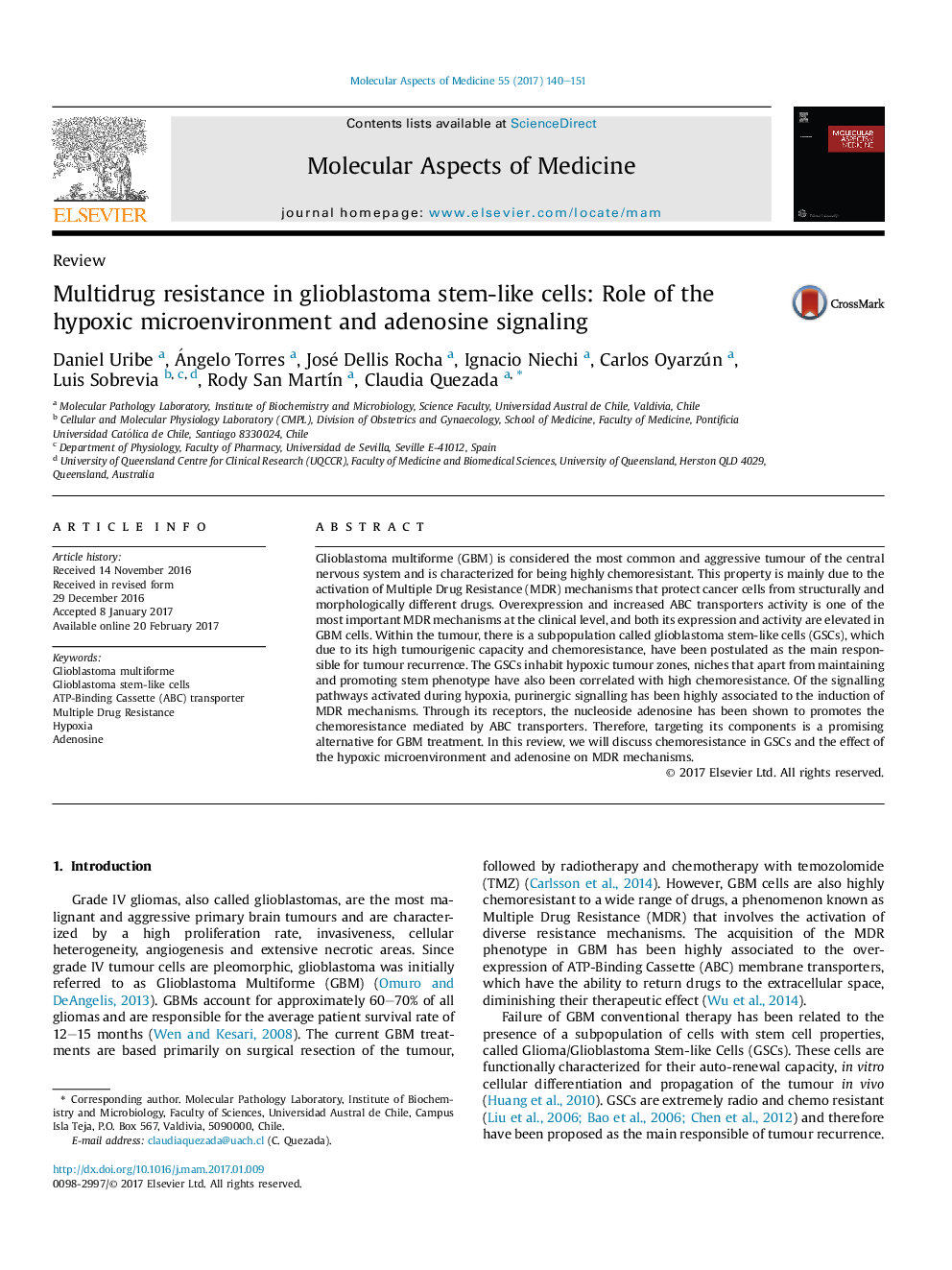| کد مقاله | کد نشریه | سال انتشار | مقاله انگلیسی | نسخه تمام متن |
|---|---|---|---|---|
| 5513847 | 1541431 | 2017 | 12 صفحه PDF | دانلود رایگان |
Glioblastoma multiforme (GBM) is considered the most common and aggressive tumour of the central nervous system and is characterized for being highly chemoresistant. This property is mainly due to the activation of Multiple Drug Resistance (MDR) mechanisms that protect cancer cells from structurally and morphologically different drugs. Overexpression and increased ABC transporters activity is one of the most important MDR mechanisms at the clinical level, and both its expression and activity are elevated in GBM cells. Within the tumour, there is a subpopulation called glioblastoma stem-like cells (GSCs), which due to its high tumourigenic capacity and chemoresistance, have been postulated as the main responsible for tumour recurrence. The GSCs inhabit hypoxic tumour zones, niches that apart from maintaining and promoting stem phenotype have also been correlated with high chemoresistance. Of the signalling pathways activated during hypoxia, purinergic signalling has been highly associated to the induction of MDR mechanisms. Through its receptors, the nucleoside adenosine has been shown to promotes the chemoresistance mediated by ABC transporters. Therefore, targeting its components is a promising alternative for GBM treatment. In this review, we will discuss chemoresistance in GSCs and the effect of the hypoxic microenvironment and adenosine on MDR mechanisms.
Journal: Molecular Aspects of Medicine - Volume 55, June 2017, Pages 140-151
